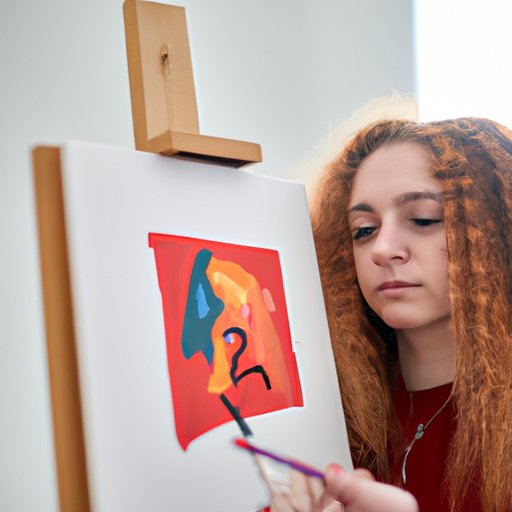Introduction
Creative arts therapy, also known as expressive therapy, is a unique form of treatment that involves using various creative or artistic mediums to help individuals with emotional, mental, and physical issues. Creative arts therapists use techniques such as art, music, dance, drama, and poetry to promote the healing of patients. In this article, we will explore some necessary steps to becoming a creative arts therapist.
Delivering a step-by-step guide
The first step to becoming a creative arts therapist is to earn a master’s degree in counseling or a related field. You’ll need to complete courses that cover principles of human development, theories of psychotherapy, and counseling techniques. After completing your degree, you must undergo substantial supervised clinical experience in creative arts therapy.
Once you’ve completed your degree and gained your supervised clinical experience, you’ll need to undertake the licensing and accreditation process of your state. The licensing and accreditation process may vary according to the state, so you need to research the requirements of your state on the American Art Therapy Association website thoroughly. Furthermore, it would be helpful to check the licensure process for the National Association of Drama Therapy or the American Dance Therapy Association.
Certification is an additional step in the process of becoming a creative arts therapist. Certifications are an excellent way to demonstrate expertise, but they are typically not required to practice creative arts therapy. However, some employers may require certification in a specific creative arts therapy modality. Different forms of creative arts therapy have specialized certifications, such as the Board-Certified Music Therapist (MT-BC), the Registered Art Therapist (ATR), and the National Certified Counselor (NCC).
One of the most essential parts of a creative arts therapist’s daily work is performing assessments and developing treatment plans that meet their patient’s specific needs. During a therapy session, a creative arts therapist may use music, dance, art, or expressive writing to encourage patients in the exploration of their emotions and thoughts. They help them resolve conflicts, reduce anxiety, manage stress, and enhance social interaction.
Becoming a creative arts therapist is not just a matter of completing the necessary education and certification requirements. It is also essential to develop a successful career strategy. Building a network of professional contacts, participating in consistent training, and seeking professional development opportunities are all crucial steps in a therapist’s career progression.
Personal stories from professionals
Learning from practicing creative arts therapists can be quite useful when exploring the journey of becoming a creative arts therapist. Listening to experienced professionals sharing their career stories, training experiences, and challenges they faced provides relatable advice to those who wish to follow the same path. Some professionals might even disclose advice they would have given their younger selves about becoming a creative arts therapist. Such practical advice is invaluable to career planning.
The benefits of Creative arts therapy
Creative arts therapy provides benefits to individuals who are dealing with a range of mental health and physical health issues. This form of therapy can help people achieve balance in their lives by helping them to express their thoughts and emotions in a non-traditional way. Patients may find creative arts therapy especially helpful in expressing difficult-to-articulate emotions and feelings.
Various creative arts therapy approaches are available, including art therapy, dance therapy, drama therapy, and music therapy. Art therapy, for example, is a way to help patients express their emotions and thoughts through artistic expression. It can also be especially helpful for individuals who find it difficult to verbalize feelings. Creative arts therapy supports and increases mental and emotional stability, improves self-awareness, and enhances coping abilities.
Spotlighting creative arts therapy organizations
Creative arts therapy organizations offer a range of therapeutic services and provide invaluable support to artists and therapists. These organizations provide training opportunities, characterizing their approach to creative arts therapy and how they train their therapists. They highlight the essential characteristics individuals must possess to be successful creative arts therapists, including creativity, empathy, and a passion for helping others.
Looking into training programs
Aspiring creative arts therapists can choose from a wide variety of courses and training programs to pursue their career objectives. Each graduate program and certification has specific requirements, so it’s essential to research and evaluate the different options available. Completing a training program in creative arts therapy gives an individual a range of skills that will enable them to help others successfully.
Conclusion
The role of the creative arts therapist is crucial in helping people to overcome emotional, physical, and mental health issues. Becoming a creative arts therapist requires specific formal education, licensing, and certification processes that are different for each state. In addition to education and certification, building a network of professional contacts, participating in continuing education opportunities, and seeking out professional development opportunities are critical steps for building a career as a successful creative arts therapist. If you have a passion for the creative arts and want to help others, becoming a creative arts therapist may be a fulfilling and rewarding career path for you.
(Note: Is this article not meeting your expectations? Do you have knowledge or insights to share? Unlock new opportunities and expand your reach by joining our authors team. Click Registration to join us and share your expertise with our readers.)
